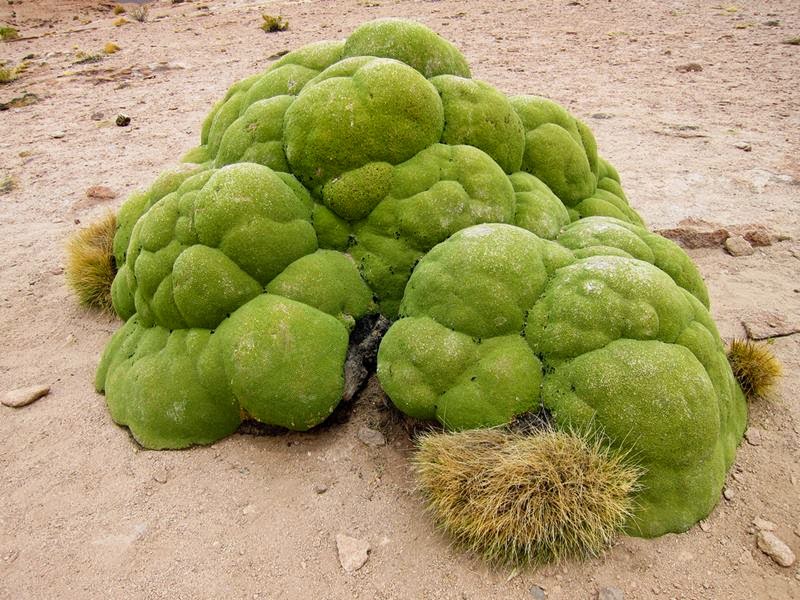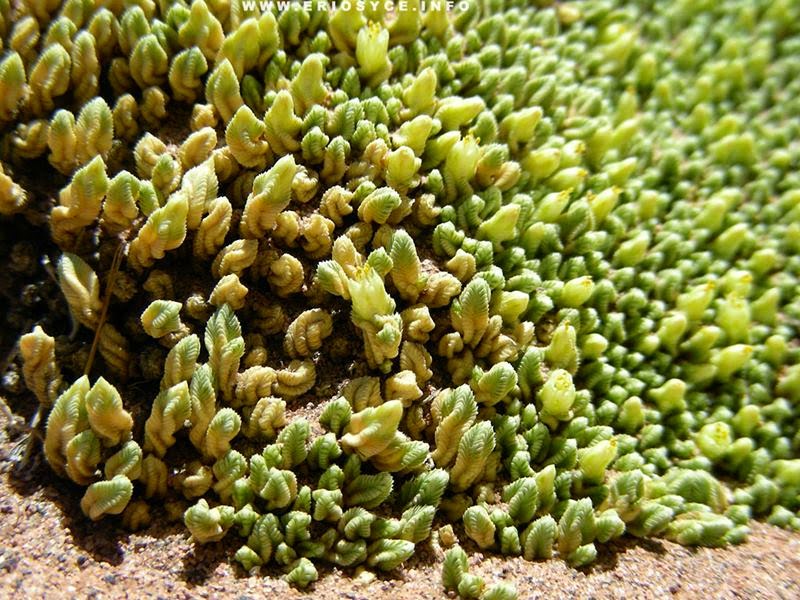Yareta (Azorella compacta, also known in Spanish as "Llareta", or Azorella, Yareta in past), a flowering plant of the South American family Apiaceae. It looks like green cotton or looks like a green cloud on the ground. It occurs in the grassy plains of Puna in the Andes in Peru, Bolivia, Chile, and in western Argentina at 3200 to 5250m altitude. Puna flowers are characterized by alpine bunch-grasses infused with herbs, grass, mosses, mosses, ferns, pillow plants, and occasional low-lying trees, with sedges and rushes in poorly ventilated areas.
 |
| Yareta plant |
Llareta
Azorella is home to about 70 species of flowering plants in the family Araliaceae, native to South America, New Zealand, and the islands of the Southern Ocean. A species is sometimes placed in the family Apiaceae. They are slow-growing carpet-growing plants that thrive on high exposure to mountains and the sub-subantarctic coast; at large they can form circular mounds of leaves up to one meter high but usually less than one dm in height. Several species are grown as ornamental plants in rock gardens. The beautiful, cold Andean landscapes are adorned with the Yareta or Llareta (Azorella compacta), a rugged, cushion-like carpet that grows only one millimeter a year and is in danger of extinction.
First Image credit Miguel Vieira
 |
| Llareta plant |
Image credit Magnus von Koeller
Llareta plant
Llareta plant / Yareta plant — The compact, fragrant dunes, such as the coral reefs of Azorella compacta, or Yareta, live in the arid, cold climate of the high Puna range and are virtually free of vegetarian animals. Yareta is something that stays green all year round. The pink or lavender flowers are hermaphrodite (it has both male and female organs) and is pollinated by insects. This plant is self-sufficient. Observations at two sites, at 3960 and 4500 m, have shown that the flow rate, or rotation, occurs throughout the year, even in each plant. The development from flower to mature seed takes three to four months. Flower growth and plant growth are concentrated in the eastern and northern parts of the plant, probably due to large direct outbreaks.
Azorella Compacta
 |
| Azorella compacta |
Image credit Lon&Queta
Yareta plant — This plant prefers light (sandy) soil with plenty of water. It can grow in nutritious areas, regardless of whether the soil is acidic, neutral, or basic (alkaline). Yareta is well adapted to the high cooling standards common in the highlands, and they cannot grow in the shade. The plant grows in combination to reduce heat loss and is very close to the soil level where the air temperature is 2 degrees Celsius higher than that of strong air, this is due to the longwave radiation illuminated by the soil (usually dark grey and black in Puna).
 |
| Plants in the Andes mountains |
Image credit Lon&Queta
Andes mountain plants — This plant grows at an average of one millimeter per year. At this stage of development, most of the plants at this site are about 850 years old, and Azorella compacta have been found at times estimated to be 3,000 years old., a native species from the highlands of the Andes mountain, in northeastern Chile, and used traditionally to treat asthma, colds and bronchitis, inflammatory diseases and pain as the main symptoms. Interestingly, no scientific reports are available about its benefits or toxicity. The resin found in this plant is used as a medicinal plant.
 |
| Plants of the Andes |
Image credit Lon&Queta
 |
| Andes Mountain Plants |
Image credit Magnus von Koeller
 |
| Green Blobs |
Image credit D!ck Culbert
 |
| Plants in Andes Mountains |
Image credit D!ck Culbert
 |
| The 3000 Years Old Plant |
Image credit Spiniflores
 |
| Llareta Atacama Desert Chile |
Image credit Mario Vidal
 |
| Llareta |
Image credit Michael Schwab
 |
| Yareta or Llareta |
Image credit Evie Ekins
 |
| Yaretas |
Image credit twiga269 ॐ FEMEN
 |
| Yareta |
Image credit twiga269 ॐ FEMEN
 |
| Llareta plant |
Image credit Pedro Szekely
Source — Zipcodezoo | Wikipedia | Jstor | Valentine

No comments:
Post a Comment